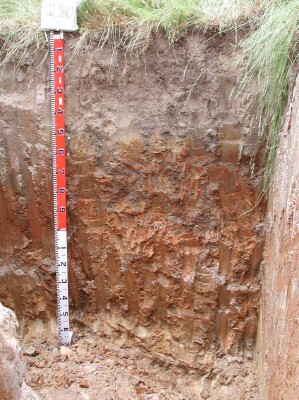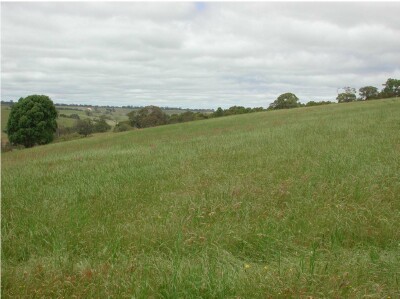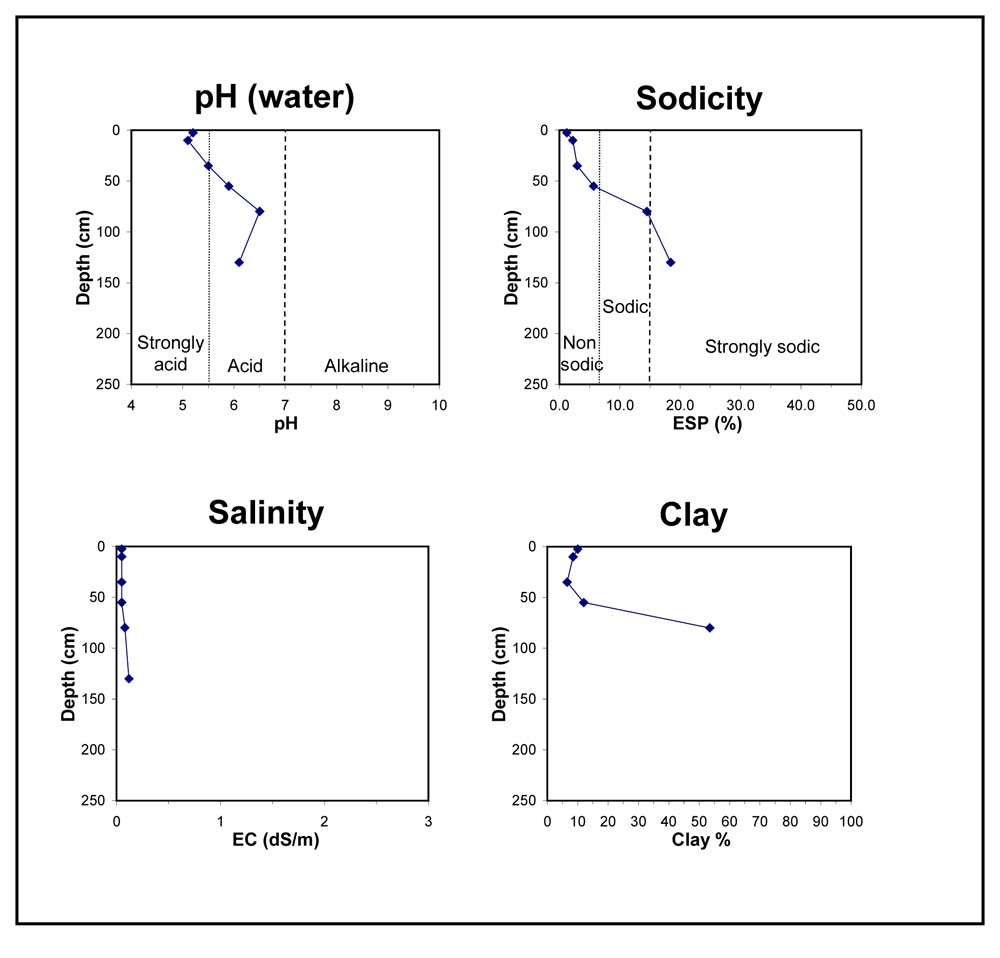| A1 | 0-5 cm | Dark greyish brown (10YR4/2) loamy sand, weak subangular blocky structure (5-10 mm), firm to weak consistence when dry pH 5.2. Clear transition to: |  |
| A21 | 5-15 cm | Brown (10YR5/3) loamy sand, conspicuously bleached (10YR6/2) when dry, massive structure, very firm consistence when dry, pH 5.1. Gradual transition to: |
| A22 | 15-50 cm | Brown (10YR5/3) loamy sand to sand, conspicuously bleached (10YR7/1) when dry, a few faint medium yellow mottles, massive structure, firm consistence when dry, pH 5.5. Clear transition to: |
| A23 | 50-60 cm | Very pale brown (10YR7/3), clayey sand to sandy clay loam, conspicuously bleached (10YR82) when dry, many distinct coarse yellowish brown (10YR5/6) mottles, massive structure, firm consistence when dry, few medium subangular quartz pebbles (6-20 mm), pH 5.9. Clear to abrupt transition to: |
 | Subsoil |  |
| B2 | 60-100 cm | Brown (10YR4/3), heavy clay, many prominent medium dark yellowish brown (10YR4/6) strong brown (7.5YR5/6) and light yellowish brown (2.5Y6/3) mottles, weak columnar structure (100-200 mm) parting to strong lenticular structure, firm consistence when dry, few distinct clay skins present, pH 6.5. Gradual transition to: |
| B3 | 100-160 cm | Light olive brown (2.5YR5/3), heavy clay, many prominent coarse red (2.5YR4/6) and yellowish red (5YR5/6) mottles, moderate lenticular structure, pH 6.1. Abrupt transition to: |
| C | 160+ cm | Weathered granite |





